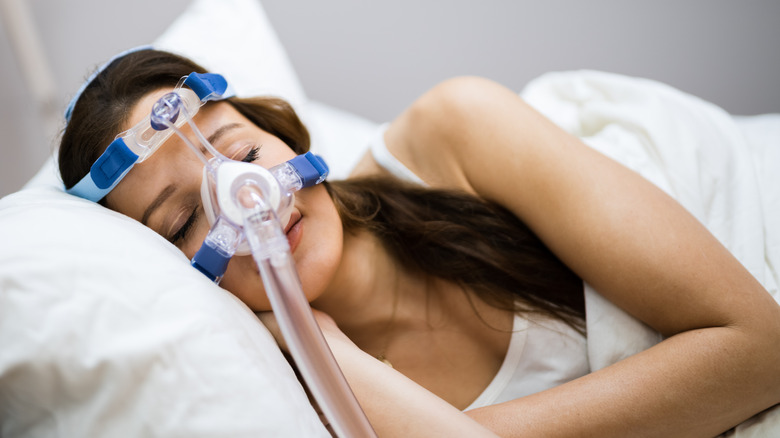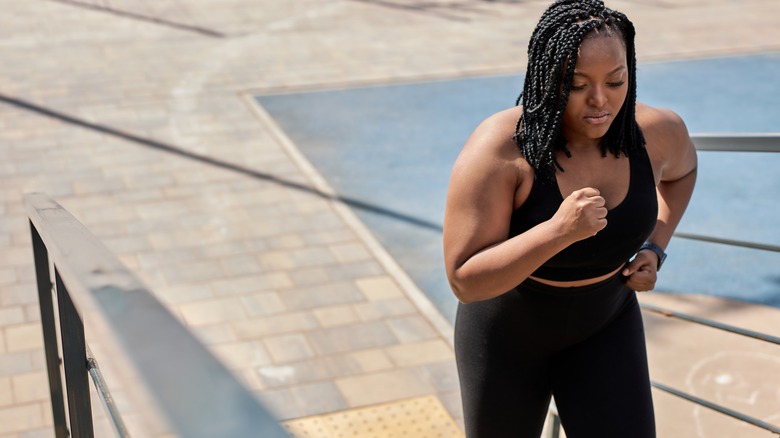Exercises That Are Effective In Helping Sleep Apnea
Sleep apnea is a fairly common sleep disorder that affects around 25% of men and 10% of women, according to the Cleveland Clinic. While it occurs more frequently in older individuals, it can also affect babies and children. This sleep disorder is marked by a tendency to stop breathing during sleep, which causes an individual to wake up periodically, explains the Mayo Clinic. Other symptoms include abnormally loud snoring, sleepiness during the day after a full night's rest, waking up with a headache or dry mouth, and insomnia.
There are three types of the condition, known as obstructive sleep apnea, central sleep apnea, and complex sleep apnea syndrome (via the Mayo Clinic). The first has to do with a physical relaxation of the mouth and throat muscles during sleep that can obstruct the respiratory pathway. The second is a failure of the brain to send the necessary signals to the parts of the body involved with breathing during sleep. The third is a mixture of the two previous conditions.
A 2015 study published in the Journal of Thoracic Disease examined the prevalence of sleep apnea, its risk factors, and potential complications. It found that the condition is correlated with older age and obesity. It is also frequently associated with a number of serious diseases, including stroke, hypertension, and coronary artery disease.
While there is currently no official cure for sleep apnea (via ResMed), there are a number of ways to alleviate the condition, including through exercise.
Do these exercises for a better night's sleep
Since sleep apnea involves the respiratory system and is related, in part, to excess weight, exercise can help two-fold in alleviating symptoms associated with the condition by opening up the airways and promoting healthy weight loss. A 2016 study published in The Brazilian Journal of Pulmonology pointed out that exercise has also been found to positively affect upper airway dilator muscle tone while also reducing fluid buildup in the neck. This reduces symptoms associated with obstructive sleep apnea, in particular. Even when weight loss did not occur with the increase in physical activity, study participants showed an increase in their ability to stay asleep, less daytime sleepiness, and improvements in oxygen consumption during the night.
Eat This, Not That! outlines some of the best exercises for those experiencing sleep apnea. For starters, any cardiovascular exercise — including but not limited to running, swimming, walking, and cycling — is beneficial for the respiratory system. Cardiovascular exercise also enlarges the upper airway, allowing more air to pass through.
If cardio isn't your thing, gentle exercises such as yoga can also aid in a good night's sleep (via Eat This, Not That!). Yoga promotes relaxation, which brings down our stress levels and allows for more restful sleep. In a similar sense, practicing deep breathing exercises can have a stress-reducing effect while also opening the upper airway and improving airflow.


